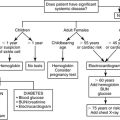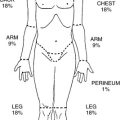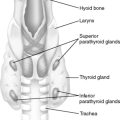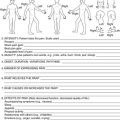CHAPTER 8. Safety
Dina A. Krenzischek
OBJECTIVES
At the conclusion of this chapter, the reader will be able to:
1. Define patient safety.
2. Describe the American Society of PeriAnesthesia Nurses (ASPAN) position statement on perianesthesia safety.
3. List 2009 The Joint Commission (TJC) National Patient Safety Goals, patient safety resources, and Council on Surgical and Perioperative Safety (CSPS) safety goals.
4. List perianesthesia safety net, harm levels, and methods of reporting/analysis.
5. Identify key elements of safety culture, including workplace civility.
I. OVERVIEW
A. Patient safety
1. The core of standard practice of perianesthesia nurses
2. Considered the highest priority
3. The freedom from accidental injury caused by medical care or medical error
4. The achievement of intended outcomes
B. Safety is defined as
1. A condition of being safe from undergoing or causing hurt or loss
2. Protection against failure, breakage, or accident
C. ASPAN position statement on perianesthesia safety
1. Responsible in defining the principles of safe quality nursing practice in the perianesthesia setting
2. Highly committed to the culture of safety
3. A collective of shared knowledge and beliefs regarding safe health care practice settings and the provision of safe practice
4. revention of any incidence or risk of injury, danger, or harm
5. Goal is to promote a safe perianesthesia care setting and provide guidelines for best practices.
II. CORE VALUES AND TENETS OF A SAFETY CULTURE
A. Communication
1. Reporting errors/safe practices
2. Ensuring a complete and systematic approach to hand-off processes and transfer of care
3. Developing and using effective listening skills
B. Advocacy
1. Protecting patient from harm
2. Upholding ethics of care
3. Maintaining patients’ rights
4. Seeking and implementing best practices
C. Competency
1. Achieving and supporting professional competence in clinical practice
2. Initiating, supporting, and providing education for staff and patients
3. Demonstrating appropriate clinical judgment and critical thinking
4. Measuring and monitoring quality measures and nurse-sensitive indicators
D. Efficiency/timeliness
1. Maintaining a healthy environment of care
2. Providing timely interventions and reports
3. Appreciating cues and initiating appropriate interventions
E. Teamwork
1. Collaborating with health care providers
2. Building mutual trust between all health care providers
3. Supporting an organizational culture of safety
III. 2009 TJC SAFETY GOALS AND KEY POINTS
A. Goal 1: Improve the accuracy of patient identification.
1. Use two identifiers for:
a. Medication administration/IV fluids
b. Blood products
c. Blood samples and specimens
d. Blood transfusion
e. Treatment procedures
f. Charts and forms
2. Final verification process before surgery or procedure
B. Goal 2: Improve the effectiveness of communication among caregivers.
1. Hand-off communication: verbalize accurate, clear, complete, interactive
2. Read back including critical results and provider’s orders
3. List of abbreviations, acronyms, symbols, and dose—not used
4. Timeliness of reporting, receipt of critical test results and values
5. Standardized approach to hand-off communications
C. Goal 3: Improve the safety of using medications.
1. Review and verify allergies.
2. Be alert and take action on look-alike/sound-alike medications.
3. Label medications, containers, and solutions.
4. Attention to anticoagulant therapy, insulin, cardiac medications, etc.
5. Verify unclear orders.
6. Avoid distraction and interruptions during medication administration.
D. Goal 7: Reduce the risk of health care–associated infection.
1. Wash hands (15 seconds) before and after patient contact.
2. Assess and report any signs of infection.
3. Implement evidence-based practices to prevent health care–associated infections.
4. Implement best practices or evidence-based guidelines to prevent central line–associated bloodstream infections.
5. Implement best practices for preventing surgical site infections.
6. Implement and encourage others to follow isolation protective techniques.
E. Goal 8: Accurately and completely reconcile medications across the continuum of care.
1. Obtain and verify medication list from patient (name, unit dose, dose amount, frequency, last dose).
2. Reconcile medication list to provider’s order.
3. Document any changes noted.
4. Communicate the completed reconciled list to the next receiving unit nurse, including other assessments.
5. Communicate and educate patient directly and family as needed when patient is going home, using the completed reconciled list.
6. Report any inconsistency or problems to the provider.
F. Goal 9: Reduce the risk of patient harm resulting from falls.
1. Follow institutional fall precaution protocol.
2. Follow institutional restraint protocol including any competency training
3. Stay with patient or delegate someone to assist patient when dressing to go home.
4. Adjust patient assignment depending upon the needs of high- risk patients.
G. Goal 10: Reduce the risk of influenza and pneumococcal disease in institutionalized older adults.
1. Follow institutional flu vaccine protocol.
2. Follow administration protocol of pneumococcus vaccine.
3. Report any known cases of influenza.
H. Goal 11: Reduce the risk of surgical fires.
1. Assess and report any equipment with damaged electrical parts.
2. Manage patient’s injuries as a result of fire that occurred intraoperatively.
I. Goal 13: Encourage patients’ active involvement in their own care as a patient safety strategy.
1. Encourage patients and families to report safety concerns.
2. Identify ways of reporting and communicate to patient and family members.
3. Identify process of correcting patient and family concerns in a timely manner.
J. Goal 14: Prevent health care–associated pressure ulcers (decubitus ulcers).
1. Assess areas of potential pressure ulcer.
2. Follow institutional protocol for management of high-risk patients, including documentation.
K. Goal 15: The organization identifies safety risks inherent in its patient population.
1. Identify patients with risk for suicide.
2. Assess and document potential signs of suicidal behaviors.
3. Report any problem to the provider and facilitate psychiatric consult as ordered.
4. Provide resource to watch patient and determine type of resource when transferring patient to a receiving unit.
L. Goal 16: Improve recognition and response to changes in a patient’s condition.
1. Provide competency training to staff to meet the needs of the population to be served, including critically ill patients.
M. Implement universal protocol.
1. Conduct a preprocedure/surgical verification process.
2. Facilitate the marking of the procedure site.
3. Time out before starting a procedure.
IV. PATIENT SAFETY RESOURCES
A. Agency for Healthcare Research and Quality
1. Clinical practice guidelines
2. Evidence-based practice
3. Patient safety
4. Funding opportunities
5. Be Involved in Your Healthcare Tips
a. 20 tips to help prevent medical errors
6. Healthcare 411
a. Latest findings, news, and consumer information
B. Institute for Safe Medication Practices
1. Alerts for patients
a. Cancer treatment, safe medication, medication samples, and medicine reviews
C. National Committee for Quality Assurance
1. Strategies to improve care
2. Indicators
3. Protocols
4. Cost reduction
5. Disease management
6. Measurement
D. National Guideline Clearinghouse
1. Evidence-based practice guidelines
E. National Patient Safety Foundation
1. Patient safety resources
2. Safety organizations
3. Safety definitions
4. Safety advisories
a. Tips for improving patient safety
F. TJC
1. Sentinel Event Alerts
a. Medical error prevention guideline for safe treatment
G. World Health Organization
a. Protection against failure or accident
V. CSPS
A. All members of the multidisciplinary perioperative care team participate to achieve optimal patient outcomes.
B. Members include:
1. American Association of Nurse Anesthetists (AANA)
2. American Association of Surgical Physician Assistants (AASPA)
3. American College of Surgeons (ACS)
4. American Society of Anesthesiologists (ASA)
5. American Society of PeriAnesthesia Nurses (ASPAN)
6. Association of PeriOperative Registered Nurses (AORN)
7. Association of Surgical Technologists (AST)
C. Core principles endorsed
1. Correct site surgery
2. Sharps safety in the OR
3. Prevention of retained foreign objects
4. Fire safety
5. Prevention of venous thromboembolism
6. Prevention of health care–associated infections
7. Audible physiological alarms
8. Transfer-of-care principles
9. Universal nomenclature
10. Standardized glossary of times
11. Consideration for other core principles
a. Practitioner competency and credentialing
b. Systems-based issues
c. Communication issues
d. Violence in the workplace
VI. ASPAN PERIANESTHESIA SAFETY NET, HARM LEVEL, REPORTING, AND ANALYSIS
A. Perianesthesia safety net
1. Improve the accuracy of patient identification and final verification before procedures to prevent identification errors.
2. Improve the effectiveness of communication among caregivers.
3. Improve the safety of using medications, and monitor medication errors.
4. Eliminate wrong-site, wrong-patient, wrong-procedure surgery.
5. Improve the safety of using infusion pumps, equipment, or both.
6. Improve the effectiveness of clinical alarm systems.
7. Reduce the risk of health care–associated infections.
8. Reduce the risk of patient harm resulting from falls.
9. Reduce the risk of influenza and pneumococcal disease in institutionalized older adults.
10. Reduce the risk of surgical fires.
11. Implement applicable National Patient Safety Goals and associated requirements by components and practitioner sites.
12. Encourage the active involvement of patients and their families in the patient’s care.
13. Prevent health care–associated pressure ulcers.
14. Identify safety risks inherent in the patient population (including suicide risk).
15. Other
a. Laboratory test problems
b. Radiology/imaging test problems
c. Transfusion
d. Behavioral
e. Care coordination
f. Staffing-related problems
(1) Cause of harm to patient
(2) Contributory causes to adverse outcomes
g. Physician order entry–related problems
h. Other adverse events
B. Harm levels
1. National Coordinating Council for Medication Error Reporting and Prevention Index
a. Category A: circumstances or events that have the capacity to cause error
b. Category B: an error that occurred but did not reach the patient
c. Category C: an error that occurred and did reach the patient but did not cause harm
d. Category D: an error that occurred, reached the patient, and required monitoring to confirm that it resulted in no harm to the patient and/or required intervention to preclude harm
e. Category E: an error that occurred that may have contributed to, or resulted in, temporary harm to the patient and required intervention
f. Category F: an error that occurred that may have contributed to, or resulted in, temporary harm to the patient and required initial or prolonged hospitalization
g. Category G: an error that occurred that may have contributed to, or resulted in, permanent patient harm
h. Category H: an error that occurred that required intervention necessary to sustain life
i. Category I: an error that occurred that may have contributed to, or resulted in, the patient’s death
C. Methods of reporting and analysis
1. Reporting
a. Situation-Background-Assessment-Recommendation (SBAR) method introduced by TJC (Box 8-1)
BOX 8-1
SBAR REPORTING METHOD
Situation (S): What is the problem or main issue?
▪ Patient (Mr. Smith) was admitted to the post anesthesia care unit (PACU) with an oxygen saturation of 89%, and the oxygen tank was found to be empty. Patient was sleepy and not easily arousable.
Background (B): What are the circumstances of the situation?
▪ Mr. Smith is a 55-year-old patient who has had a bilateral knee replacement.
▪ Anesthesia technique: received epidural anesthesia but failed and general anesthesia.
▪ Analgesia: intraoperatively, received a total of 3000 micrograms fentanyl and 4 mg Hydromorphone. At the end of the case, received an additional 100 mcg fentanyl and 2 mg Hydromorphone for severe pain.
Assessment (A): What do you think is the problem?
▪ Preoperatively, patient reported that he has low pain threshold and would like his pain controlled.
▪ Portable oxygen tank was sent to the OR with the stretcher as part of routine, but PSI (pounds per square inch), the amount of oxygen in the tank was not checked and recorded.
▪ Oxygen tank was used during transport, but PSI was not checked.
▪ Upon PACU admission, oxygen tank was found to be empty, and patient was sleepy with shallow breathing and low oxygen saturation.
Recommendations (R): What needs to be done to correct the problem?
▪ Review practice standard regarding portable oxygen check. If no standard, develop a practice standard including PSI check before use, documentation and reporting of problem upon patient transfer.
▪ Disseminate, educate, and implement new standard.
▪ Follow-up audit for compliance and report findings.
b. SBAR used in reporting of events at the institutional, department, and unit-based levels and during performance improvement and unit-based staff meetings to reduce unsafe practices
2. Analysis
a. Risk management review
(1) Process in building defense by collecting data related to exposure
(2) Documents circumstances
(3) Establishes probable cause, liability, and losses
(4) Identifies risk leading to future events
b. Peer review
(1) An organized effort whereby practicing professionals review quality and appropriateness of service ordered or performed by their professional peers
(2) Determines whether standard of care has been violated
(3) Determines whether additional action is warranted
(4) Ensures adequate training and competency
c. Failure mode error analysis
(1) Procedure for analysis of potential failure modes within a system for the classification by severity or determination of the failure’s effect upon the system
(2) Risk analysis technique/systematic thinking
(3) Failure mode: effects, severity, causes, and action
(4) Examines functions and process
d. Root cause analysis
(1) A problem-solving method for identifying the root causes of problem or event
(2) Scientific method
(3) Multidisciplinary approach
(4) Focuses on obtaining information about lost system control
(5) Getting at root of the problem, seeking real cause
VII. SAFETY CULTURE AND WORKPLACE CIVILITY
A. Safety culture
1. Framework for consideration:
a. Developing a system-wide approach to patient safety
(1) Vision statement
(2) Leadership visibility and commitment to patient safety
(3) Understanding different models of errors
b. Create a safety culture in the unit-based environment
(1) Level of compassion and concern for patient safety
(2) Competency and training
(3) Recognition and security for reporting errors
(4) Recognition and security for identifying improvement opportunities
(5) Learning environment where errors are valued
(6) Opportunities for improvements
(7) Open to interactions with patients, family, and health care team
(8) Removal of culture of blame
(9) Safe environment built from the bottom
(10) Culture of safety supported from the top
(11) Use of safety checklist/safety standards
B. Workplace civility
1. Rapidly changing, stressful environment
2. Civility is an ethical role, implemented to maintain teamwork in a safe environment.
3. Constant awareness of others based on restraint, respect, and consideration
4. Rules of considerate conduct (Table 8-1)
| Rule | Key Points |
|---|---|
| 1. Pay attention | Makes meaningful interaction possible |
| 2. Acknowledge others | Gives honor to a person |
| 3. Think the best | Decent thing to do and source of healthful innocence in our lives |
| 4. Listen | Plan, show, and be a cooperative listener |
| 5. Be inclusive | Feeling of welcome and acceptance |
| 6. Speak kindly | Speaking with consideration and kindness is the heart of civil behavior |
| 7. Don’t speak ill | Nice but needs to be built |
| 8. Accept and give praises | Deepest principle in human nature |
| 9. Respect even a subtle “no” | Most elementary and significant rule of respect |
| 10. Respect others’ opinions | Respect for the whole person |
| 11. Mind your body | Validate who we are |
| 12. Be agreeable | Cultivate ability to consider that you might be wrong and ability to admit that you do not know |
| 13. Keep it down and rediscover silence | Silence is the ability to hear others |
| 14. Respect other people’s timeliness | Punctuality is nonnegotiable |
| 15. Respect other people’s space | Most elementary way of consideration |
| 16. Apologize earnestly and thoughtfully | A decent thing to do |
| 17. Assert yourself | Stand up for own right in a diplomatic manner |
| 18. Avoid personal questions | Respect privacy of others |
| 19. Care for your guests | Guests should not feel that they must earn your hospitality |
| 20. Be a considerate guest | Respect time of arrival and departure and do not bring a surprise guest |
| 21. Think twice before asking favors | Solve your own problem and only turn to others as a last resort |
| 22. Refrain from idle complaints | Speak up to bring good change but not unwanted misery |
| 23. Give constructive criticism | You speak with the intention to help with a problem but not to humiliate |
| 24. Respect the environment and be gentle to animals | Nature is in danger, and we must defend it from ourselves |
| 25. Don’t shift responsibility and blame | Rude and unfair by blaming someone |
BIBLIOGRAPHY
1. American Society of PeriAnesthesia Nurses, Standards of perianesthesia nursing practice 2008–2010. ( 2009)American Society of PeriAnesthesia Nurses, Cherry Hill, NJ.
2. Cohen, M.R., Defining medication errors. ed 2 ( 2007)American Pharmacists Association, Washington, DC.
3. Forni, P.M., Choosing civility: The twenty-five rules of considerate conduct. ( 2003)St. Martin’s Press, New York.
4. Frankel, A., Strategies for building a hospital wide culture of safety. ( 2006)Oak Brook, IL, JCR.
5. Institute of Medicine, Patient safety: Achieving a new standard of care. ( 2004)National Academic Press, Washington, DC.
6. Iowa Department of Public Health: Promoting and Protecting the Health of Oawans, Available at:www.idph.state.ia.us/patient_safety/resources ( November 24, 2008); Accessed.
7. Kim, H.; Hathen-Vaires, N.; Capuano, T.; Morgan, G.; Bende-Kovitz, R., Peer case review sharpens event analysis, J Nurs Care Qual 23 (4) ( 2008) 296–304.
8. Kohn, L.T.; Corrigan, J.M.; Donaldson, M.S., To err is human: Building a safer health system. ( 1999)National Academy Press, Washington, DC.
9. Leape, L.L., A systems analysis approach to medical error, J Eval Clin Pract 3 (3) ( 1997) 213–222.
10. Lin, L.; Liang, B.A., Addressing the nursing work environment to promote patient safety, Nurs Forum 42 (1) ( 2007) 20–30.
11. Merriam-Webster Dictionary, Safety. ( November 24, 2008) ; Available at:www.merriam-webster.com/dictionary/safety; Accessed.
12. Nieva, V.F.; Sorra, J., Safety culture assessment: A tool for improving patient safety in healthcare organizations, Qual Saf Health Care 12 (suppl 2) ( 2003) ii17–ii23.
13. Spath, P.L., Investigating sentinel events: How to find and resolve root causes. ( 1998)Brown-Spath & Associates, Forest Groove, OR.
14. Spath, P.L., Error reduction in health care. ( 2000)AHA Press/Jossey-Bass, San Francisco.
15. The Joint Commission, 2009 National patient safety goals. ( November 24, 2008) ; Available at:www.jointcommission.org/PatientSafety/NationalPatientSafetyGoals/; Accessed.






